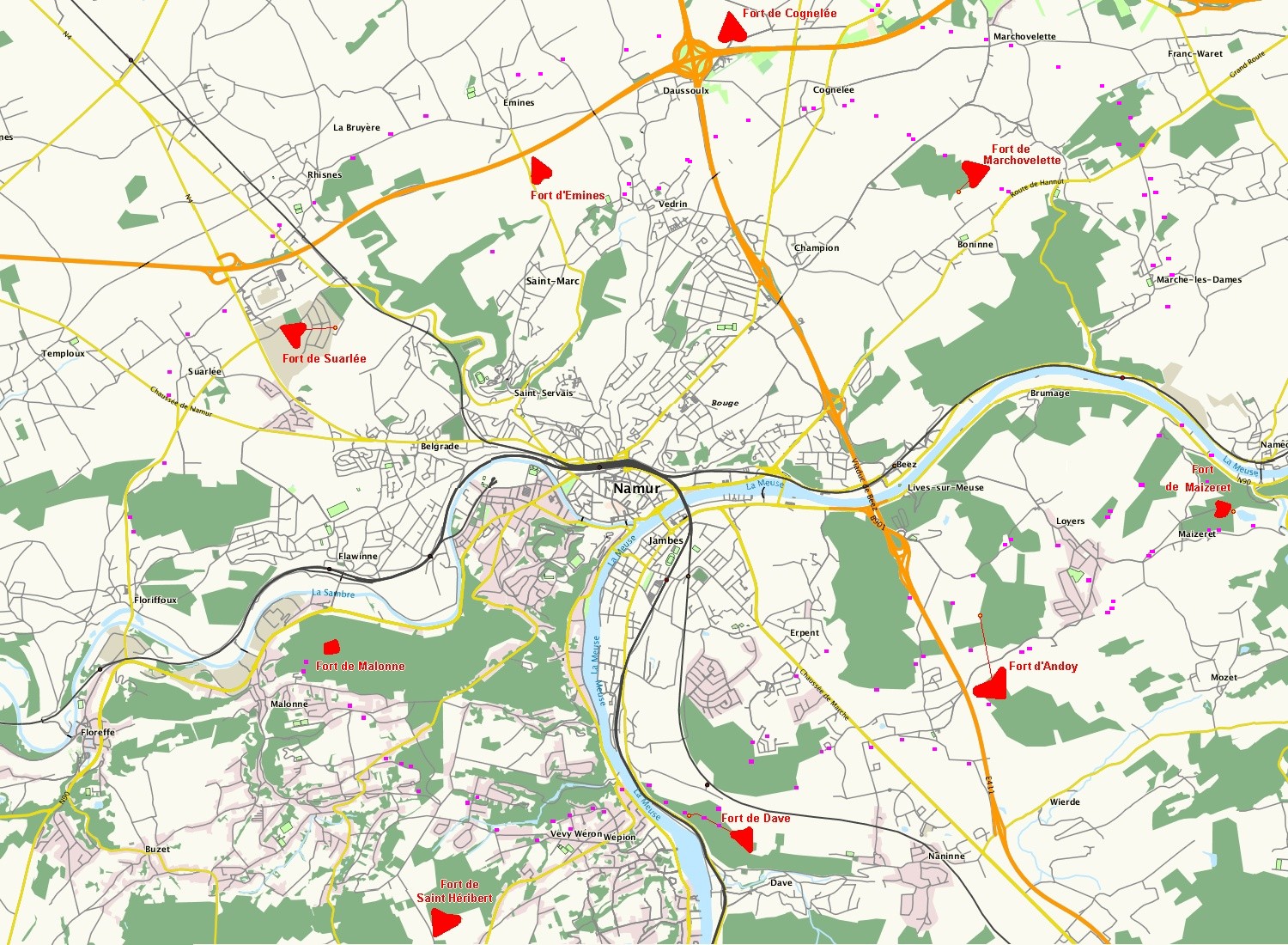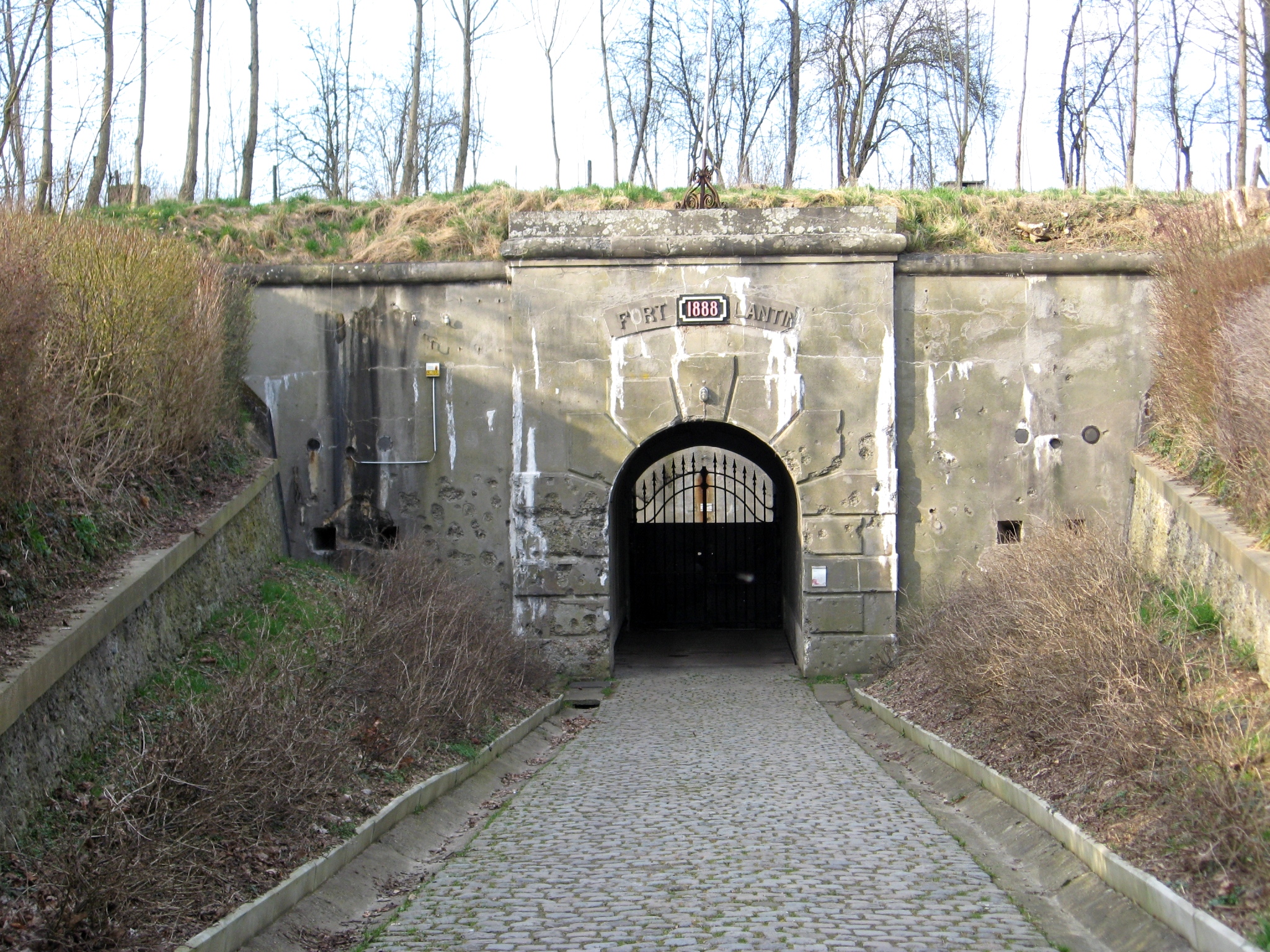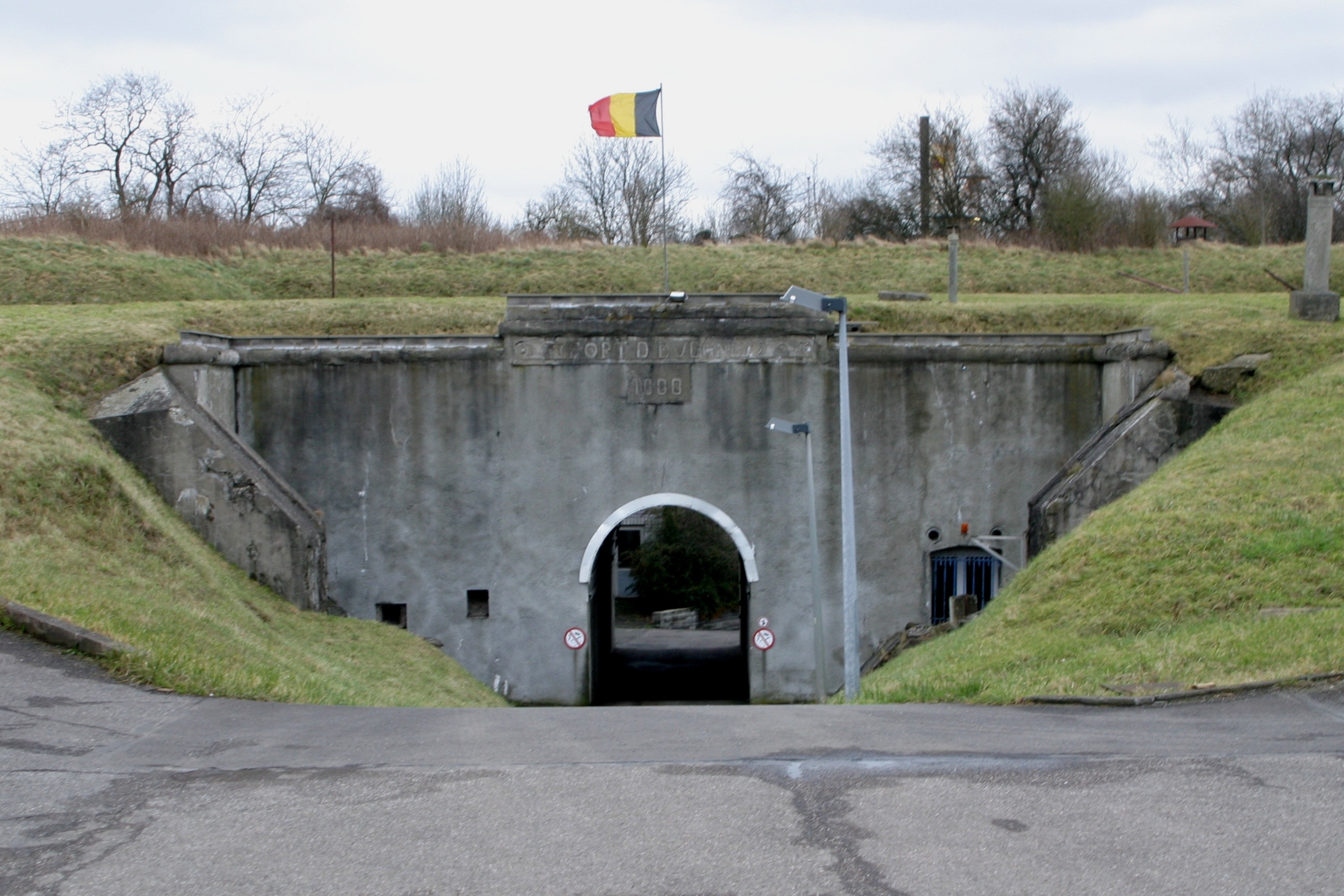|
5.7 Cm Maxim-Nordenfelt
The 5.7 cm Maxim-Nordenfelt ''"Canon de caponnière"'' was a fortress gun and infantry gun developed during the 1880s in Britain which was sold to Belgium and later produced under license by the Cockerill company. It saw action during World War I in both Belgian and German hands. Design Fortress gun In 1887 the Belgian War Ministry ordered 185 5.7 cm fortress guns to arm their fortresses including Namur and Liège, Liege. The 5.7 cm Maxim-Nordenfelt was a short 26 caliber gun and not the longer 42-50 caliber QF 6-pounder Nordenfelt naval gun. It was a typical built-up gun of the period made of steel with a Rifled breech loader#The sliding block, vertical sliding-block breech and it fired Glossary of British ordnance terms#Fixed QF, fixed QF ammunition of a number of different styles. The guns were mounted iGrusonwerkegun turrets or in armored casemates on Glossary of British ordnance terms#CP, central pivot mounts and used in an anti-personnel role. Infantr ... [...More Info...] [...Related Items...] OR: [Wikipedia] [Google] [Baidu] |
Infantry Gun
Infantry support guns or battalion guns are artillery weapons designed and used to increase the firepower of the infantry units they are intrinsic to, offering immediate tactical response to the needs of the unit's commanding officer. They typically have short, low-velocity barrels, and light construction carriages, allowing them to be more easily manoeuvred on the battlefield. They are generally used for direct fire, rather than the indirect fire of other types of artillery. Their role has generally been replaced by tanks using tank guns, infantry fighting vehicles using autocannons, other combat vehicles, mortars, recoilless rifles, rocket-propelled grenades and shoulder-launched missiles. Infantry support guns Development history Infantry support guns were the first type of artillery employed by armed forces, initially in China, and later brought to Europe by the Mongol invasion. In their initial form, they lacked carriages or wheels, and were simple cast barrels called in Fre ... [...More Info...] [...Related Items...] OR: [Wikipedia] [Google] [Baidu] |
Fort D'Andoy
The Fort d'Andoy is one of nine forts built as part of the Fortifications of Namur in the late 19th century in Belgium. It was built between 1888 and 1892 according to the plans of General Henri Alexis Brialmont. Contrasting with the French forts built in the same era by Raymond Adolphe Séré de Rivières, the fort was built exclusively of unreinforced concrete, a new material, rather than masonry. In 1914 the fort was heavily bombarded by German artillery in the Battle of Namur. Andoy was upgraded in the 1930s to become part of the fortified position of Namur in an attempt to forestall or slow an attack from Germany. It saw action in 1940 during the Battle of Belgium, and was captured by German forces. The fort is now abandoned on private property. Description The Fort d'Andoy is located about southeast of the center of Namur. The fort forms a triangle in plan, and is one of the larger Namur forts. A deep by ditch encircles the fort. The ditches were defended in enfilade by ... [...More Info...] [...Related Items...] OR: [Wikipedia] [Google] [Baidu] |
Fort De Liers
The Fort de Liers is one of twelve forts built around Liège, Belgium, in the late 19th century. The overall Fortified Position of Liège was a constituent part of the country's National Redoubt. Fort de Liers was built between 1881 and 1884 according to the plans of General Henri Alexis Brialmont. Contrasting with the French forts built in the same era by Raymond Adolphe Séré de Rivières, the fort was built exclusively of unreinforced concrete, a new material, rather than masonry. The fort was heavily bombarded by German artillery in the Battle of Liège. Liers was never upgraded like the other forts of Liège. It is now used as a test site for aircraft engines and is not accessible to the public. Description The Fort de Liers is located about north of the center of Liège, near Liers. one of the smaller Liège forts, Liers forms an isosceles triangle. A deep by ditch encircles the fort. The principal armament was concentrated in the central massif. The ditches were defen ... [...More Info...] [...Related Items...] OR: [Wikipedia] [Google] [Baidu] |
Fort De Lantin
The Fort de Lantin is one of twelve forts built around Liège, Belgium, in the late 19th century. The overall Fortified Position of Liège was a constituent part of the country's National Redoubt. Fort de Lantin was built between 1881 and 1884 according to the plans of General Henri Alexis Brialmont. Contrasting with the French forts built in the same era by Raymond Adolphe Séré de Rivières, the fort was built exclusively of unreinforced concrete, a new material, rather than masonry. The fort was heavily bombarded by German artillery in the Battle of Liège. Lantin was never upgraded like the other forts of Liège and retains its character as a Brialmont fort. It is preserved as a museum and may be visited by the public. Description The Fort de Lantin is located about northwest of the center of Liège. The fort forms an isosceles triangle whose base is long and whose sides measure . A deep by ditch encircles the fort. The principal armament was concentrated in the centr ... [...More Info...] [...Related Items...] OR: [Wikipedia] [Google] [Baidu] |
Fort De Hollogne
The Fort de Hollogne is one of twelve forts built around Liège, Belgium, in the late 19th century. The overall Fortified Position of Liège was a constituent part of the country's National Redoubt. Fort de Hollogne was built between 1881 and 1884 according to the plans of General Henri Alexis Brialmont. Contrasting with the French forts built in the same era by Raymond Adolphe Séré de Rivières, the fort was built exclusively of unreinforced concrete, a new material, rather than masonry. The fort was heavily bombarded by German artillery in the Battle of Liège. Hollogne was never upgraded like the other forts of Liège and retains its character as a Brialmont fort. It is preserved as a museum and may be visited by the public. Description The Fort de Hollogne is located about west of the Liège city centre, directly adjacent to the Liège Airport's runway. The fort forms an isosceles triangle whose base is long and whose sides measure . A deep by ditch encircles the for ... [...More Info...] [...Related Items...] OR: [Wikipedia] [Google] [Baidu] |
Fort De Fléron
The Fort de Fléron is one of twelve forts built around Liège, Belgium, in the late 19th century. The overall Fortified Position of Liège was a constituent part of the country's National Redoubt. Fort de Fléron was built between 1881 and 1891 according to the plans of General Henri Alexis Brialmont. Contrasting with the French forts built in the same era by Raymond Adolphe Séré de Rivières, the fort was built exclusively of unreinforced concrete, a new material, rather than masonry. The fort was heavily bombarded by German artillery in the Battle of Liège. Fléron was upgraded in the 1930s in an attempt to forestall or slow an attack from Germany. Located in the center of Fléron, the fort has been buried and is surrounded by apartments. Description The Fort de Fléron is located about southeast of the center of Liège, in the center of Fléron. The fort formed an isosceles triangle whose base is long and whose sides measured . A deep by ditch encircled the fort. ... [...More Info...] [...Related Items...] OR: [Wikipedia] [Google] [Baidu] |
Fort De Flémalle
The Fort de Flémalle is one of twelve forts built around Liège, Belgium, in the late 19th century. The overall Fortified Position of Liège was a constituent part of the country's National Redoubt. Fort de Flémalle was built between 1881 and 1884 according to the plans of General Henri Alexis Brialmont. Contrasting with the French forts built in the same era by Raymond Adolphe Séré de Rivières, the fort was built exclusively of unreinforced concrete, a new material, rather than masonry. The fort was heavily bombarded by German artillery in the Battle of Liège. Attacked in both World War I and World War II, the fort has been preserved as a museum. Description The Fort de Flémalle is located about southwest of the center of Liège. Flémalle overlooks the Meuse valley upstream from Liège. The fort was built as an irregular trapezoid, almost triangular. A deep by ditch encircles the fort. The principal armament was concentrated in the central massif. The ditches were d ... [...More Info...] [...Related Items...] OR: [Wikipedia] [Google] [Baidu] |
Fort D'Évegnée
The Fort d'Évegnée is one of twelve forts built around Liège, Belgium, in the late 19th century. The overall Fortified Position of Liège was a constituent part of the country's National Redoubt. Fort d'Évegnée was built between 1881 and 1884 according to the plans of General Henri Alexis Brialmont. Contrasting with the French forts built in the same era by Raymond Adolphe Séré de Rivières, the fort was built exclusively of unreinforced concrete, a new material, rather than masonry. The fort was heavily bombarded by German artillery in the Battle of Liège in World War I and again at the opening of World War II. It is now an industrial site, used for the storage and testing of rocket propellant. Description The Fort d'Évegnée is located about east of the center of Liège near the community of Évegnée-Tignée. With the Fort de Fléron, Évignée protects the Hesbaye plain and rail access from the direction of Aachen, as well as the Hervé road. The fort forms an i ... [...More Info...] [...Related Items...] OR: [Wikipedia] [Google] [Baidu] |
Fort D'Emines
The Fort d'Emines is one of nine forts built as part of the Fortifications of Namur in the late 19th century in Belgium. It was built between 1888 and 1892 according to the plans of General Henri Alexis Brialmont. Contrasting with the French forts built in the same era by Raymond Adolphe Séré de Rivières, the fort was built exclusively of unreinforced concrete, a new material, rather than masonry. In 1914 the fort was heavily bombarded by German artillery in the Battle of Namur. Unlike seven of the nine Namur forts, Émines was never upgraded to become part of the fortified position of Namur. Instead, it became a supply and munitions depot. The fort is now abandoned on private property. Description The Fort d'Emines is located about north of the center of Namur. The fort, one of the smaller Brialmont forts, is a triangle. A deep by ditch encircles the fort. The ditches were defended in enfilade by 57 mm guns in casemates resembling counterscarp batteries, firing at shot tr ... [...More Info...] [...Related Items...] OR: [Wikipedia] [Google] [Baidu] |
Fort D'Embourg
The Fort d'Embourg is one of twelve forts built around Liège, Belgium, in the late 19th century. The overall Fortified Position of Liège was a constituent part of the country's National Redoubt. Fort d'Embourg was built between 1881 and 1884 according to the plans of General Henri Alexis Brialmont. Contrasting with the French forts built in the same era by Raymond Adolphe Séré de Rivières, the fort was built exclusively of unreinforced concrete, a new material, rather than masonry. The fort was heavily bombarded by German artillery in the Battle of Liège in World War I and again at the opening of World War II. It has been preserved and is operated as a museum. Description The Fort d'Embourg is located about southeast of the center of Liège, on the heights above the community of Chaudfontaine, overlooking the Vesdre valley. The fort was built as an irregular rectangle, in contrast to most Brialmont forts, which were triangular. A deep by ditch encircles the fort. The ... [...More Info...] [...Related Items...] OR: [Wikipedia] [Google] [Baidu] |
Fort De Dave
The Fort de Dave is one of nine forts built as part of the Fortifications of Namur in the late 19th century in Belgium. It was built between 1888 and 1892 according to the plans of General Henri Alexis Brialmont. Contrasting with the French forts built in the same era by Raymond Adolphe Séré de Rivières, the fort was built exclusively of unreinforced concrete, a new material, rather than masonry. In 1914 the fort was heavily bombarded by German artillery in the Battle of Namur. Dave was upgraded in the 1930s to become part of the fortified position of Namur in an attempt to forestall or slow an attack from Germany. It saw action in 1940 during the Battle of Belgium, and was captured by German forces. The fort is now abandoned on state property. Description The Fort de Dave is located about south of the center of Namur. The fort, one of the smaller Brialmont forts, is a triangle overlooking the Meuse. A deep by ditch encircles the fort. The ditches were defended in enfilad ... [...More Info...] [...Related Items...] OR: [Wikipedia] [Google] [Baidu] |
Fort De Cognelée
The Fort de Cognelée is one of nine forts built as part of the Fortifications of Namur in the late 19th century in Belgium. It was built between 1888 and 1892 according to the plans of General Henri Alexis Brialmont. Contrasting with the French forts built in the same era by Raymond Adolphe Séré de Rivières, the fort was built exclusively of unreinforced concrete, a new material, rather than masonry. In 1914 the fort was heavily bombarded by German artillery in the Battle of Charleroi, Battle of Namur. Unlike seven of the nine Namur forts, Cognelée was never upgraded to become part of the Fortified Position of Namur, fortified position of Namur. Instead, it became a supply and munitions depot. The fort is now abandoned on private property. Description The Fort de Cognelée is located about north of the center of Namur (city), Namur. The fort, one of the larger Brialmont forts, is a triangle. A deep by ditch encircles the fort. The ditches were defended in enfilade by 5.7 cm ... [...More Info...] [...Related Items...] OR: [Wikipedia] [Google] [Baidu] |





